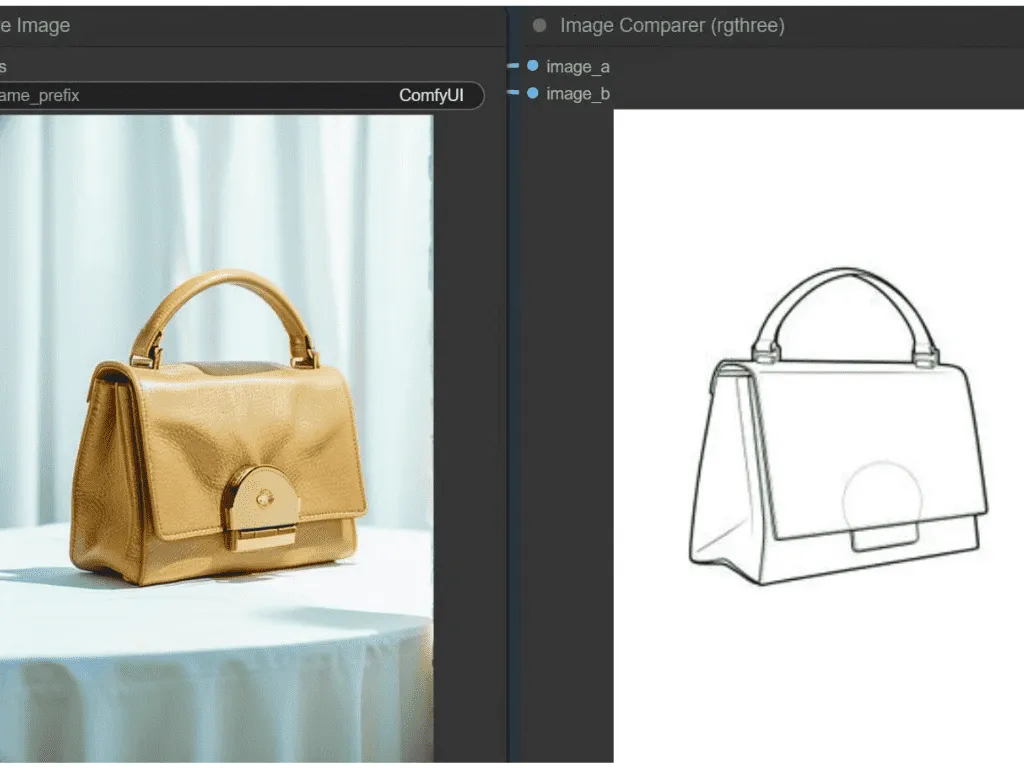Artificial Intelligence (AI) is transforming industries worldwide, and fashion design is no exception. From clothing to accessories, AI is revolutionizing traditional design processes with its efficiency and innovation. Handbags, as iconic fashion items, require a blend of aesthetics, functionality, and practical design feasibility. Can AI handle the task of handbag design? The answer is not straightforward. This article explores the feasibility of using AI in handbag design, highlighting its advantages, challenges, and future potential to help designers and brands understand the possibilities of this emerging technology.


How AI Can Be Used in Handbag Design
1. Design Generation
AI, through technologies like Generative Adversarial Networks (GANs) or Diffusion Models, can quickly generate handbag design sketches or 3D models. Designers simply input parameters like “vintage style, leather material, red color,” and AI produces a range of designs that meet these criteria. These designs are diverse and can spark inspiration. For example, tools like MidJourney create high-resolution visuals, allowing designers to test ideas rapidly.
2. Trend Prediction
AI excels at analyzing vast datasets, including social media platforms like X, fashion magazines, and consumer purchase records, to forecast trends. For instance, by studying 2025 fall/winter fashion data, AI might predict that metallic finishes or oversized handbags will dominate. This data-driven insight helps brands create handbags that align with market demands, ensuring they appeal to consumers.
3. Production Optimization
Beyond design, AI can streamline production. By simulating the effects of different materials, stitching methods, or hardware, AI helps designers choose cost-effective and durable options. For example, AI might suggest synthetic leather over genuine leather for a specific handbag to reduce costs and enhance sustainability.
Advantages of AI in Handbag Design
AI brings significant benefits to handbag design:
- Efficiency: Traditional handbag design can take weeks of sketching and revisions, but AI generates dozens of designs in minutes, speeding up the process.
- Data-Driven Insights: AI analyzes market trends and consumer preferences to ensure designs meet demand.
- Innovation: AI offers unconventional design ideas, helping designers think outside the box.
- Sustainability: AI optimizes material choices and production methods, reducing waste and promoting eco-friendly fashion.


Challenges of AI in Handbag Design
Despite its potential, AI faces challenges in handbag design:
- Creative Limitations: AI designs may lack the cultural, emotional, or brand storytelling depth that human designers provide. A handbag might look appealing but fail to reflect a brand’s core values.
- Technical Barriers: Using AI requires technical skills, such as data input and model training, which can be challenging for small brands or independent designers.
- Copyright Issues: AI-generated designs may raise intellectual property concerns, especially if the AI was trained on other designers’ work.
- Design Feasibility: The biggest challenge is ensuring designs are practical. AI may create innovative designs that are visually stunning but impossible to produce due to manufacturing limitations. For example, a design might look simple but require complex techniques that are costly or unfeasible. From a manufacturer’s perspective, this can lead to high development costs and lengthy trial-and-error processes, as factories test materials and techniques. Clients may need to make compromises, and the final product may not meet expectations.
Real-World Example
Two weeks ago, a client sent me an inquiry with detailed artwork (we protect client designs, so it cannot be shared here). After reviewing it, I realized it was an AI-generated design. The bag’s shape, leather, and hardware were fine, but the details and techniques were likely unachievable. We could try, but using the requested sheepskin would make sampling extremely expensive. It might take four or five rounds of samples to get close to the desired result, with unpredictable revisions along the way.
The client wanted something unique, which is great, but unique designs often lack proven feasibility. This means more time and money spent on development. Ultimately, the client chose not to proceed with sampling, likely due to the high uncertainty.


Future Outlook
The future of AI in handbag design is exciting. First, AI and human designers will collaborate more seamlessly—AI handles rapid ideation and data analysis, while humans add emotional and cultural depth to ensure unique designs. Second, as AI technology advances, generated designs will become more realistic and may even simulate textures or usability. Additionally, AI will drive personalized design, letting consumers co-create handbags tailored to their tastes. Finally, AI could level the playing field, enabling small brands to compete with larger ones using affordable AI tools.
Can AI replace designers entirely? I don’t think so. AI is a powerful tool that saves time and sparks inspiration, but it can’t fully replace human creativity. AI designs often blend existing ideas, carrying traces of current products, while human designers bring emotion, warmth, and originality. Designers also have practical product knowledge—they know what’s feasible, what isn’t, and how to find alternatives. This expertise, built on experience, is something AI cannot replicate.
Conclusion
AI is a game-changer for handbag design, offering efficiency, data-driven insights, and innovative ideas. However, challenges like creative limitations, technical barriers, copyright concerns, and design feasibility must be addressed. The best approach is to combine AI’s strengths with human creativity, creating handbags that are both stylish and meaningful. Designers and brands should explore AI tools like MidJourney or Runway to unlock new possibilities. As AI evolves, it will become an essential part of fashion design, driving a smarter, more sustainable future.



